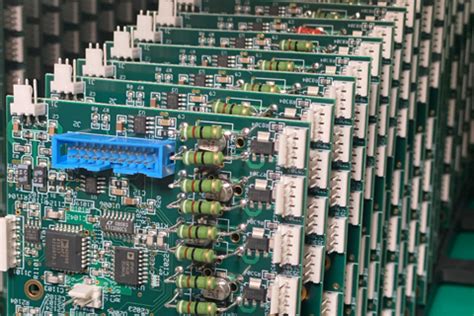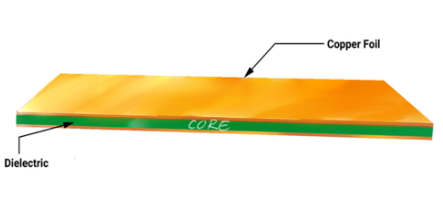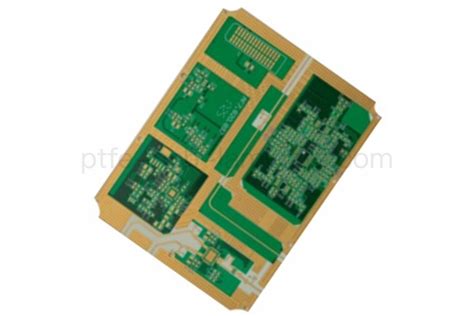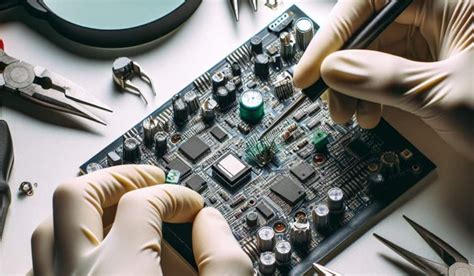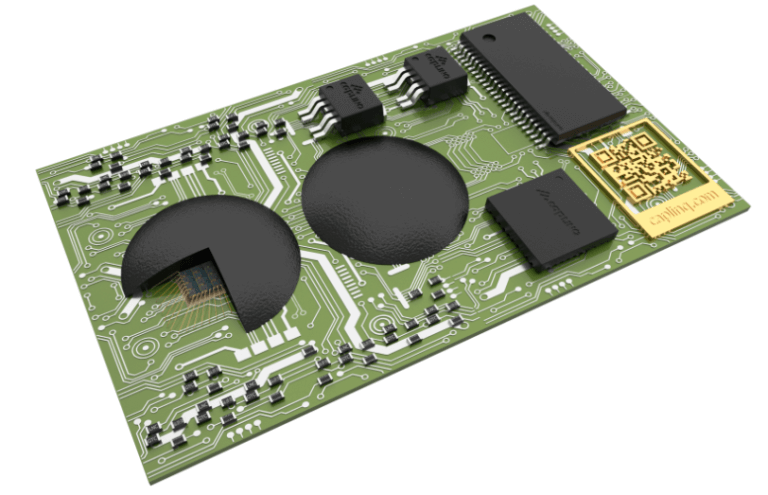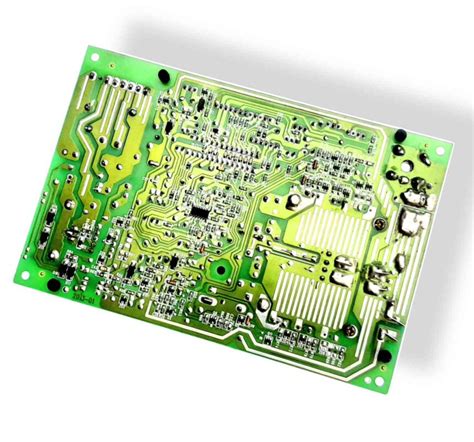Innovations in Electronic Board Assembly Techniques and Trends
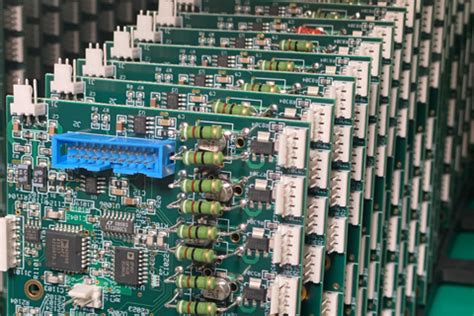
Key Takeaways
In the realm of pcb assembly and pcba, several key trends and innovations have emerged that are reshaping the landscape of electronic board assembly. Automation plays a pivotal role in enhancing efficiency, enabling manufacturers to achieve higher throughput with reduced human error. The integration of advanced technologies such as the Internet of Things (IoT) allows for real-time monitoring and predictive maintenance, thereby optimizing processes. Furthermore, as materials technology evolves, the use of lightweight yet robust substrates is becoming increasingly common, which not only supports miniaturization but also enhances thermal performance and reliability.
Another significant development in pcb assembly is the rise of robotics in assembly lines. Collaborative robots (cobots) are designed to work alongside human operators, performing repetitive tasks with precision while freeing up human resources for more complex decision-making roles. This blend of human ingenuity and robotic efficiency not only accelerates production but also cultivates a safer working environment.
"Embracing innovation in electronic board assembly is crucial for staying competitive in today’s fast-paced market."
Moreover, sustainable practices are gaining traction, prompting companies to adopt greener materials and reduce waste during the manufacturing process. To further elucidate these advancements, consider the following table highlighting critical innovations in electronic board assembly techniques:
| Trend/Innovation | Description |
|---|---|
| Automation | Streamlining production through automated processes |
| Robotics | Enhancing precision with collaborative robots |
| Advanced Materials | Utilizing lightweight substrates for improved performance |
| Sustainability | Focusing on greener practices and materials |
As these trends continue to evolve, it is clear that they will dictate the future trajectory of pcba, leading to more efficient, reliable, and sustainable manufacturing processes.
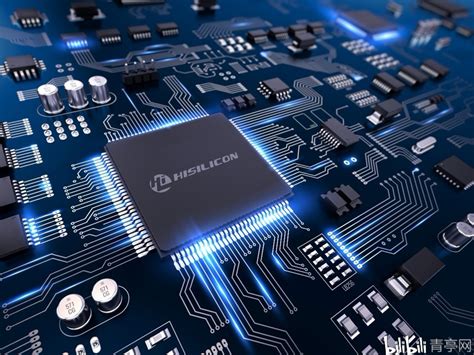
Introduction to Electronic Board Assembly: A Brief Overview
Electronic board assembly, commonly known as pcb assembly or PCBA, is a pivotal process in the electronics manufacturing industry that involves the integration of various electronic components onto a printed circuit board (PCB). This process not only creates the foundation for electronic devices but also influences the overall efficiency and effectiveness of the final product. As technology advances, so too do the techniques employed in pcb assembly. The current landscape is defined by innovations that enhance automation, improve materials used in production, and streamline processes for higher efficiency. For instance, the advent of sophisticated machinery has allowed manufacturers to adopt automated assembly techniques, which significantly reduce manual labor and improve accuracy in placing components. Furthermore, advancements in materials have led to more reliable and robust assemblies that can withstand various operational conditions. The ongoing evolution of pcba practices aims to address challenges such as reducing production time and minimizing defects, ensuring that companies can meet market demands swiftly and effectively. As industry players strive for excellence in their operations, understanding the fundamental principles of electronic board assembly lays the groundwork for exploring these innovations further.
Recent Innovations in Automation for Electronic Board Assembly
The landscape of pcb assembly has undergone significant transformation with the introduction of automation technologies that optimize manufacturing processes. Recent innovations in automation for pcba have not only enhanced productivity but also improved the quality of electronic boards. Advanced robotic systems are now integrated into the assembly lines, performing tasks with precision and speed that far exceed human capabilities. These systems utilize artificial intelligence algorithms to adapt to various production scenarios, ensuring a flexible manufacturing environment that withstands fluctuations in demand.
Moreover, automation tools equipped with smart sensors allow real-time monitoring of the assembly process. This leads to a substantial reduction in error rates and ensures that each phase of production adheres to stringent quality control standards. Automated optical inspection (AOI) is another significant advancement, enabling rapid detection of defects early in the assembly process, thus enhancing overall efficiency.
The use of advanced materials coupled with automation has also contributed to the sustainable practices within pcb assembly. Environmentally friendly materials are increasingly being utilized, allowing manufacturers to reduce their carbon footprint while maintaining high-performance standards. As a result, these innovative approaches not only streamline operations but also elevate the competitive stature of companies within the electronics manufacturing industry.
In conclusion, the ongoing advancements in automation for pcba signify a pivotal shift towards smarter and more efficient manufacturing practices, laying a strong foundation for future developments in electronic board assembly techniques.

Advanced Materials Impacting Electronic Board Assembly Techniques
The landscape of pcb assembly is rapidly evolving, influenced by the introduction of advanced materials that enhance the overall performance and reliability of pcba processes. Materials such as thermally conductive polymers and high-frequency laminates have emerged as frontrunners, enabling manufacturers to achieve greater efficiency and functionality in their electronic devices. Notably, the use of flexible substrates has expanded opportunities for miniaturization, allowing for more compact designs without sacrificing performance. Additionally, advancements in soldering materials, including lead-free options, have contributed to improved durability and reduced environmental impact in electronic board assembly. As these materials continue to develop, they foster innovation that supports emerging technologies such as the Internet of Things (IoT) and wearable devices, driving a transformation within the pcb assembly industry. The incorporation of these innovative materials not only improves process efficiency but also meets the growing demand for devices that are both efficient and sustainable, setting a new standard in electronic board manufacturing practices.
Improving Process Efficiency in Electronic Board Assembly
The quest for enhanced process efficiency in pcb assembly is at the forefront of innovation within the electronics manufacturing sector. To achieve this efficiency, manufacturers are increasingly adopting cutting-edge techniques that streamline operations and reduce production times. One of the key strategies involves the integration of advanced automation systems, which can optimize workflows and minimize human error during pcba processes. This transition not only accelerates assembly lines but also ensures a higher level of consistency and quality in the finished products.
Moreover, innovative tools such as vision systems and smart sensors play a critical role in monitoring each stage of production. These technologies enable real-time feedback on process performance, allowing for quick adjustments to maintain optimal efficiency levels. The adoption of lean manufacturing principles further complements these initiatives by minimizing waste and maximizing resource utilization within the pcb assembly framework.
In addition, leveraging sophisticated software for production planning and logistics contributes to improved cycle times by effectively managing inventory and supply chain dynamics. As these methodologies evolve, they will undoubtedly contribute to a more agile electronic board assembly process, paving the way for significant advancements in both quality and output across the industry.

The Role of Robotics in Transforming Electronic Board Assembly
The integration of robotics in pcb assembly has significantly transformed the landscape of the electronics manufacturing industry. With an increasing demand for precision and speed, the adoption of robotic technologies allows manufacturers to streamline processes and reduce the potential for human error. Robots equipped with advanced sensors and artificial intelligence are capable of performing intricate tasks, such as automated soldering, component placement, and inspection, which enhance the quality and consistency of pcba. This not only improves the overall process efficiency but also accelerates production cycles. Moreover, robotics facilitates a flexible manufacturing environment where machines can adapt to varying production volumes without compromising on quality. The continuous evolution in robotics further drives innovations in electronic board assembly, with collaborative robots (cobots) working alongside human operators to complement their skills. These advancements highlight a shift toward greater automation, ultimately leading to a more agile and responsive manufacturing ecosystem that is well-equipped to meet future demands. As industry standards evolve, embracing robotics will be essential for businesses aiming to maintain competitiveness in the rapidly changing world of electronics manufacturing.
Sustainable Practices in Electronic Board Assembly: Trends and Innovations
The integration of sustainable practices in pcb assembly is increasingly becoming a focal point within the electronics manufacturing sector. As industries worldwide strive for greener alternatives, the movement toward sustainability is reshaping pcba techniques and methodologies. Recent trends show a growing emphasis on utilizing eco-friendly materials, such as biodegradable substrates and recycled components, which significantly reduce waste and environmental impact. Additionally, advancements in technology have led to innovations in energy-efficient manufacturing processes that minimize the carbon footprint associated with traditional methods. For instance, companies are now adopting closed-loop systems, which allow for the recycling of materials throughout the entire production cycle. This not only enhances resource efficiency but also promotes a circular economy within the electronics industry. Furthermore, incorporating sustainable practices in electronic board assembly fosters greater accountability among manufacturers, encouraging them to seek certifications that verify their commitment to environmental stewardship. By prioritizing sustainability, the sector not only meets regulatory requirements but also aligns itself with consumers’ growing preference for environmentally responsible products, ultimately driving a significant shift in market dynamics.
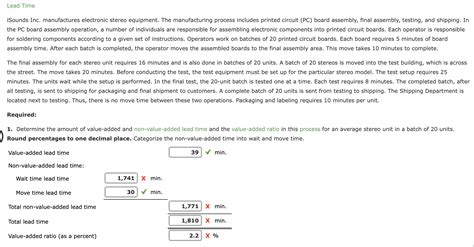
Future Trends in Electronic Board Assembly Technologies
The landscape of pcb assembly is evolving rapidly, with several emerging trends and technologies poised to enhance the efficiency and effectiveness of pcba processes. One notable trend is the increasing integration of automation in electronic board assembly. Automation technologies, such as advanced placement machines equipped with artificial intelligence, are not only speeding up production times but also reducing human error significantly. Furthermore, the adoption of innovative materials, such as flexible and lightweight substrates, is enabling more robust and efficient designs while maintaining high performance. Another critical area is the push towards enhanced process efficiency, where machine learning algorithms analyze production data to optimize workflows and reduce waste. As robotics become more sophisticated, their role in tasks like component handling, soldering, and inspection will expand, bringing about further advancements in pcb assembly techniques. The focus on sustainability is also shaping future innovations; manufacturers are exploring environmentally friendly materials and processes that minimize waste and energy consumption. By keeping a close eye on these trends, stakeholders in the electronics manufacturing industry can better prepare for a future where pcba practices are not just advanced but also sustainable and responsive to market demands.

Case Studies: Successful Implementations of Cutting-Edge Techniques
As the landscape of pcb assembly continues to evolve, several companies have pioneered innovative approaches that demonstrate the effectiveness of pcba in enhancing production capabilities. One notable case study is that of a leading electronics manufacturer that integrated advanced automation into their electronic board assembly processes. By investing in state-of-the-art machinery equipped with artificial intelligence, they were able to significantly reduce production time while increasing precision. This automation not only streamlined their pcb assembly operations but also minimized human errors, thereby enhancing overall quality.
Another exemplary case involved the utilization of advanced materials in a mid-sized firm specializing in consumer electronics. By adopting lightweight and thermally efficient materials for their pcba, they effectively improved product performance and sustainability. This shift not only satisfied emerging environmental regulations but also appealed to eco-conscious consumers, positioning the company as an innovator in the market.
Furthermore, a startup focused on smart technology illustrated how improving process efficiency could create significant competitive advantages. By implementing lean manufacturing techniques, they optimized their electronic board assembly workflow, leading to faster turnaround times for custom orders. These real-time adjustments not only fulfilled client demands more swiftly but also fostered customer loyalty through exceptional service.
Overall, these case studies underscore the transformative power of innovative techniques in shaping the future of pcb assembly and highlight how companies can harness technology and materials to achieve strategic growth and market leadership.
Conclusion
In conclusion, the landscape of pcb assembly is evolving rapidly due to continuous advancements in technology and innovative practices. The integration of automation in pcba processes has not only improved speed but has also significantly enhanced precision, reducing the likelihood of human error. Moreover, the development of advanced materials tailored for electronic board assembly is driving improved performance and durability in electronic products. These materials are enabling manufacturers to push the boundaries of what is possible in designs and applications, leading to more compact and efficient electronics. As companies adopt robotics into their operations, the role these machines play becomes increasingly pivotal, implementing consistent quality control while handling intricate tasks that would be challenging for traditional methods. Furthermore, embracing sustainable practices has become a crucial trend within the industry, as manufacturers seek to minimize environmental impact through thoughtful resource management. Collectively, these trends signify a transformative era for pcb assembly, setting the stage for future innovations that will redefine standards across electronics manufacturing. Understanding these dynamics will be essential for stakeholders aiming to excel in an increasingly competitive market.
FAQs
What is electronic board assembly?
Electronic board assembly refers to the process of connecting various electronic components onto a printed circuit board (PCB), creating a complete assembly known as PCBA (printed circuit board assembly). This is a critical step in the manufacturing of electronic devices, ensuring that all parts function correctly together.
What innovations are currently shaping the future of PCB assembly?
Recent advancements in automation, such as the use of robotic systems and machine learning, have significantly improved efficiency in pcb assembly processes. These technologies enable faster production times, reduced labor costs, and increased precision, minimizing defects during the assembly process.
How do materials impact electronic board assembly?
The choice of advanced materials, such as high-frequency laminates and lead-free solders, plays a crucial role in pcba techniques. These materials not only enhance the performance and reliability of electronics but also support sustainability through reduced environmental impact.
What role does robotics play in electronic board assembly?
Robotics has transformed how pcb assembly is conducted by facilitating high-speed placement of components with unmatched accuracy. The integration of robotic technology allows for greater flexibility in manufacturing processes while significantly reducing human error.
How are sustainable practices applied in PCB assembly?
Sustainable practices in electronic board assembly focus on reducing waste and energy consumption while utilizing eco-friendly materials. Innovations such as lead-free soldering techniques and recycling systems are becoming standard, reflecting an industry-wide commitment to sustainability.
For more insights into pcb assembly, please click here: Explore PCB Assembly Services

